November is Artissima month in Turin. The meanders of the art market are not exactly my area of expertise so i’ll jump straight to what makes Artissima Italy’s most exciting contemporary art fair (in my view): the presence of galleries that work with strong and politically-minded artists. Namely, Mor Charpentier, Zilberman Gallery, LAVERONICA, NOME and Prometeo Gallery. Here’s a quick selection of some of the artists I loved this year:

Carlos Motta, Descubriendo el nuevo mundo, 2024. Mor Charpentier
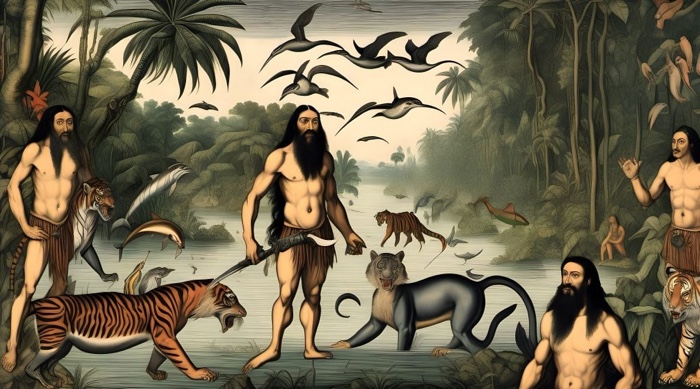
Carlos Motta, Descubriendo el nuevo mundo, 2024. Mor Charpentier
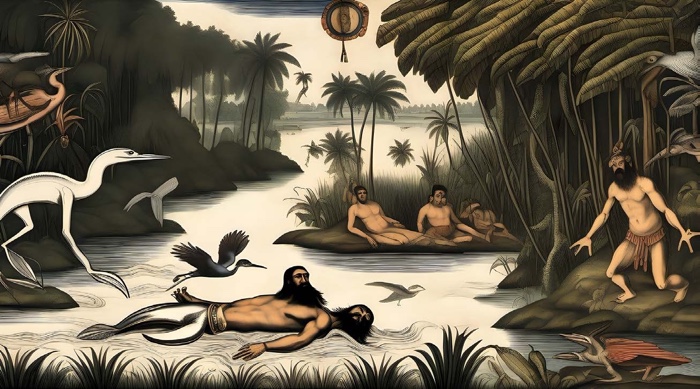
Carlos Motta, Descubriendo el Nuevo Mundo (4), 2024. Mor Charpentier
A prehistoric-like bird looks on, tigers walk on water, a pod of dolphins is flying, locals have three arms and random numbers of fingers. The bizare subjects in Carlos Motta‘s Descubriendo el Nuevo Mundo (Discovering the New World) inhabit scenes that look familiar to our Western eyes. Motta’s inkjets are an AI-enhanced take on Theodore de Bry’s visual depictions of the Americas in the 16th century. De Bry’s representations of early European expeditions to the Americas have greatly influenced the European view of the new continent. Yet, the Walloon engraver and publisher never set foot on the “New World”. His imagery of landscapes, people and events was based on second-hand information. As a result, his work is packed with errors and whitewashing of colonial violence.
Motta fed an AI program with texts by de Bry and a horde of imagery to collate a new reality. The result revisits how algorithms can regenerate, or further shape, the way the Americas have been conceived and misconceived since the colonisation.

Rosella Biscotti, The Journey, 2021. Photo: Alexandra Pace. Mor Charpentier
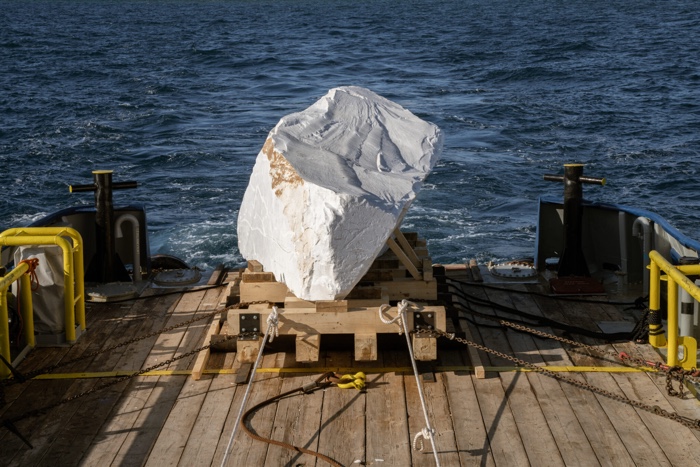
Rosella Biscotti, The Journey, 2021. Photo: Alexandra Pace. Mor Charpentier

Rosella Biscotti, The Journey, 2021. Photo: Alexandra Pace. Mor Charpentier
In 2010, Rosella Biscotti was awarded a 20-tonne block of marble from the Michelangelo Quarry (in Carrara, Italy), the historic quarry of Renaissance sculptors. Eleven years later, the artist loaded the block onto a boat and sailed on a journey between Italy, Malta, Tunisia and Libya. The route was designed to highlight a series of maritime issues that are more or less visible in public discourses: migrant itineraries, nautical borders demarcating oil and gas concessions, areas of military operations, historical commercial routes, or the migration of a sea turtle crossing the patrolling lines of the European Border Agency FRONTEX. She finally dropped the marble block overboard into the Mediterranean sea where it disappeared into the waters.
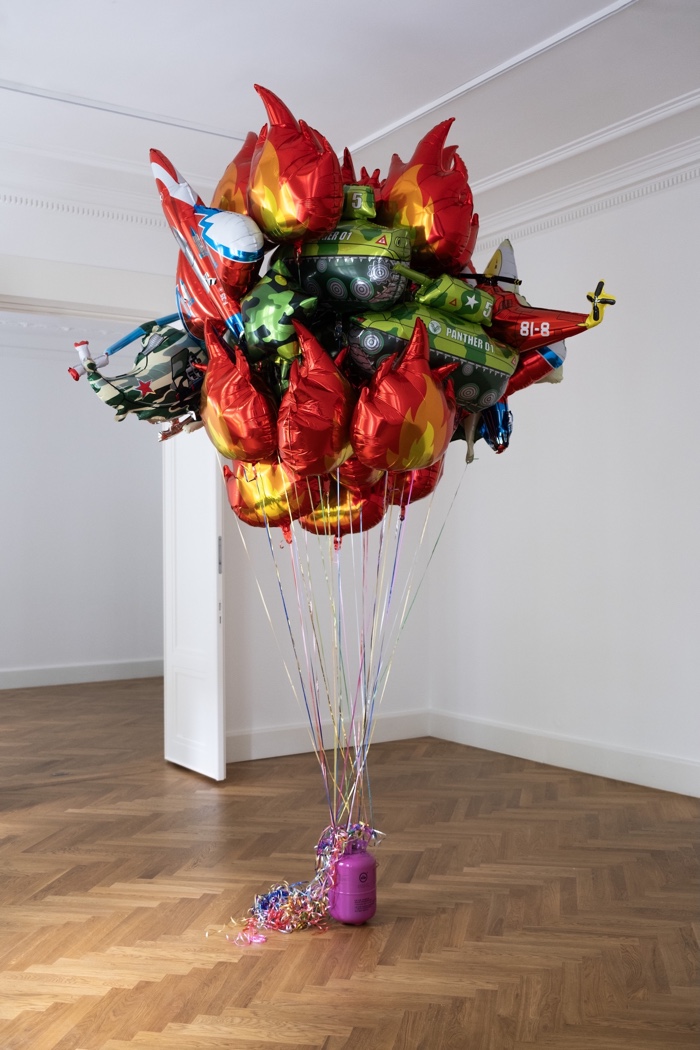
Itamar Gov, Dulce et decorum est, 2025. Zilberman gallery
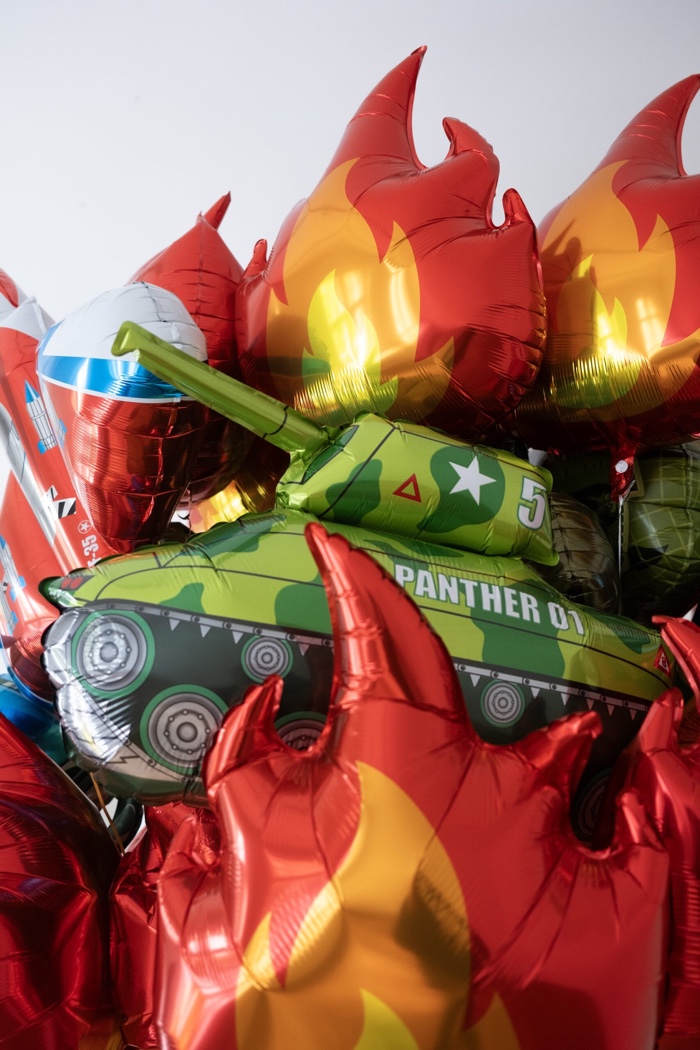
Itamar Gov, Dulce et decorum est (detail), 2025. Zilberman gallery
Itamar Gov’s balloon sculpture was like a magnet for children at the art fair. The artist attached a cluster of foil balloons to a pink helium container. Sourced from different children’s birthday shops, the balloons look cheerful and innocent from afar but as you approach, you realise that they are shaped like explosions, tanks and jet fighters.
Dulce et decorum est, the title of the work, alludes to a poem that Wilfred Owen wrote during World War I. He wrote about the atrocities he witnessed and experienced as a soldier while serving on the front line. The poem ends with a bitter invocation of Horace’s verse, “Dulce et decorum est pro patria mori” – “It is sweet and proper to die for one’s country”.
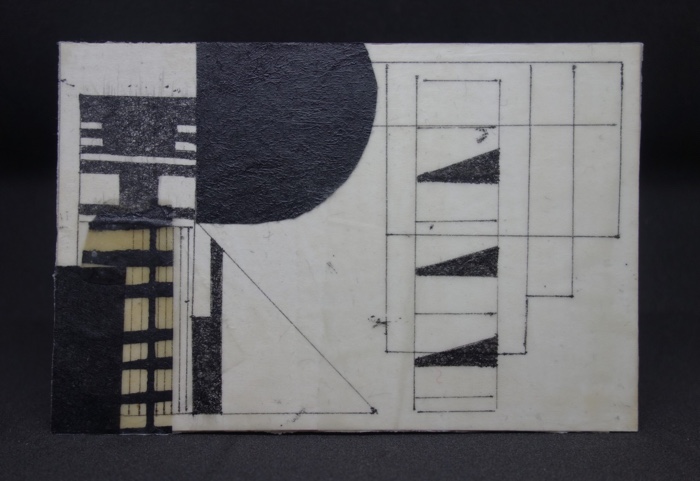
Heba Y. Amin, Encaustic Drawing #7, 2025. Zilberman gallery
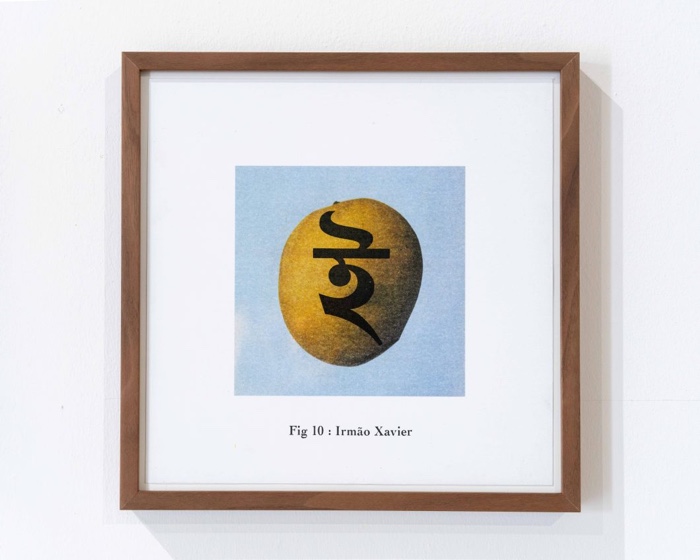
Uriel Orlow, Mangoes of Goan Origin (An Archive) (Fig. 10: Irmao Xavier), 2024. Mor Charpentier
After the Portuguese arrived in Goa in 1510, they deemed mangoes superior fruits to all other fruits. The grafting techniques introduced by the Jesuits led to the creation of over 100 mango varieties, most of them named after Portuguese landowners and politicians. These Goan mango varieties became a key diplomatic tool that significantly boosted the Estado da India’s economy by the late 16th century. The Portuguese names given to the mangoes obscure their Goan origins and the multicultural context in which they were traded. In Uriel Orlow’s prints, the images of the mangoes are superimposed with a serigraphy of the first letters of their names in languages that would have been spoken in the geographical area around Goa at that time. Through this reintroduction of linguistic diversity, the print series reclaims the complex and multi-faceted cultural heritage of the mango. It also shows how plant and human histories are deeply intertwined.

Daniela Ortiz, Decolonized Museums – Guggenheim Museum, 2024. LAVERONICA gallery
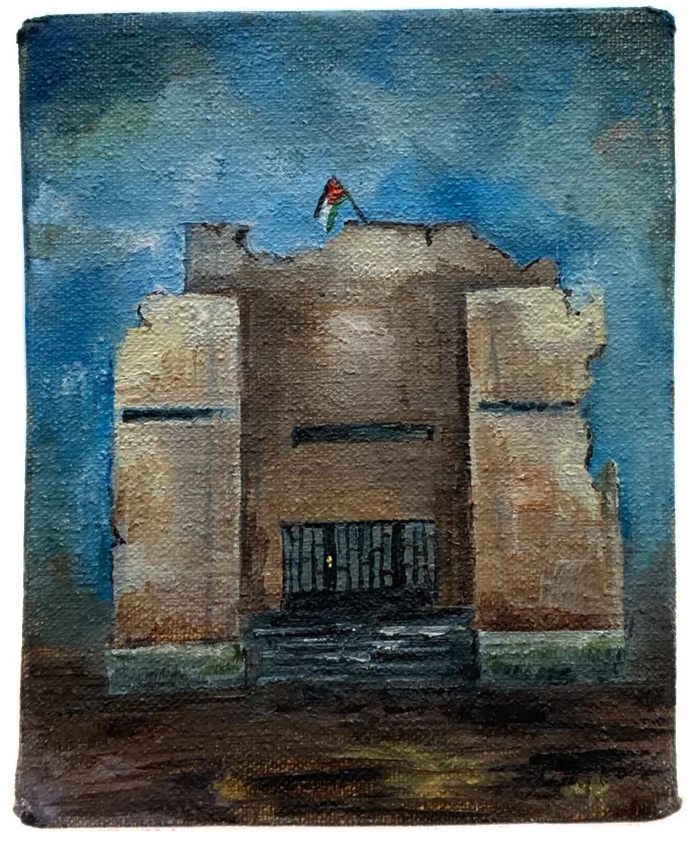
Daniela Ortiz, Israel Independence Hall. LAVERONICA gallery
Daniela Ortiz’s small paintings of Decolonized Museums are inspired by several instances of censorship she faced in Germany following her expression of solidarity with the victims of war crimes in Palestine.
The series shows different Western cultural institutions that have been exercising censorship and coercion in the face of the genocide against the Palestinian people while organising exhibitions, talks and events where they claim to want to decolonise themselves as museums. Ortiz denounces the museums’ hypocrisy by presenting what these spaces could look like if they were to act as true platforms for reparative justice, where Indigenous agency and cultural memory are prioritised.
The Guggenheim Museum, like many other cultural institutions, was a driver of gentrification and expulsion of working-class neighbourhoods. Ortiz repurposed its building and turned it into the headquarters of the Popular Committee for Housing.
Israel Independence Hall It is shown in ruins and with the Palestinian flag raised as a symbol of Palestinian victory.

Felix Shumba, Act II, A Leap, 2024. Fonti gallery
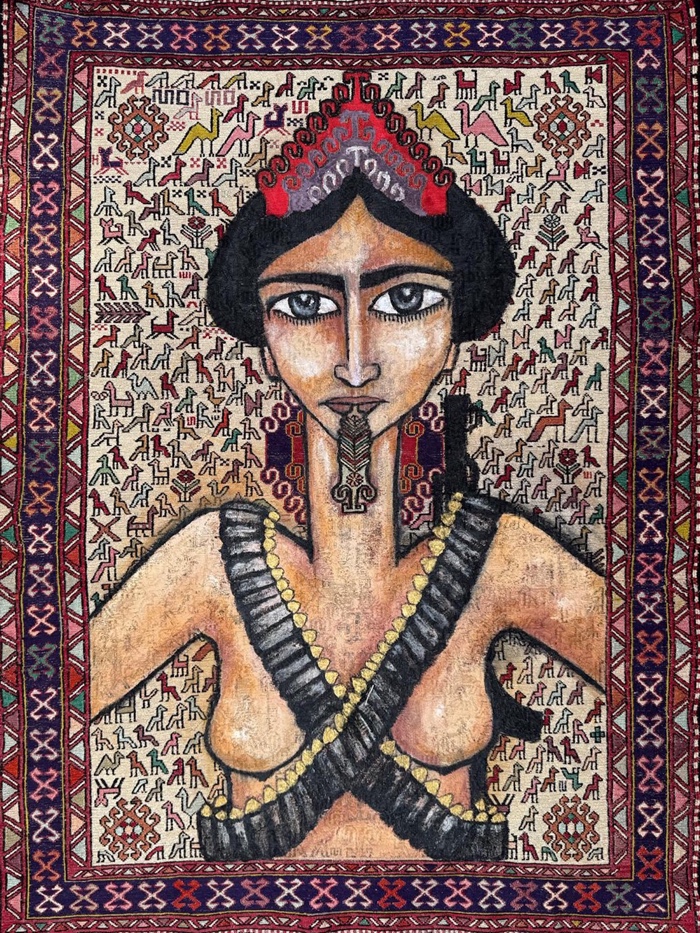
Zehra Doğan, Portrait, 2025. Prometeo gallery
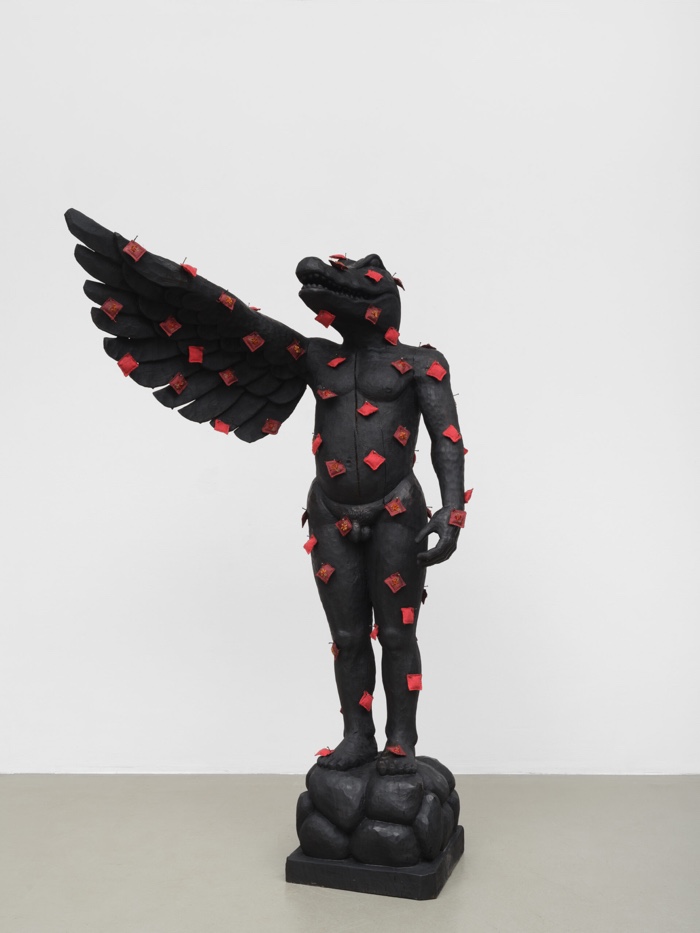
Cian Dayrit, A Muse To Abuse, 2017-2022. Photo by Marjorie Brunet Plaza. NOME gallery

Cian Dayrit, Valley of Dispossession, 2021. Gallery NOME
Cian Dayrit‘s handsewn counter-cartography of geographic regions examines and subverts power structures. Often working with members of overlooked communities (farmworkers, fishermen and the indigenous minority), the artist uncovers neglected spatial, temporal and personal narratives of the oppressed, challenging the perspectives that continue to dominate the framing of history and heritage.
In Valley of Dispossession, for example, the artist ties together the histories of land grabs and workers’ struggles for agricultural revolution, revealing how imperial practices of extraction are destroying the land. The textile is a map of the Philippines region of Central Luzon, where people have faced centuries of oppression that started with Spanish colonialism in the 16th century.
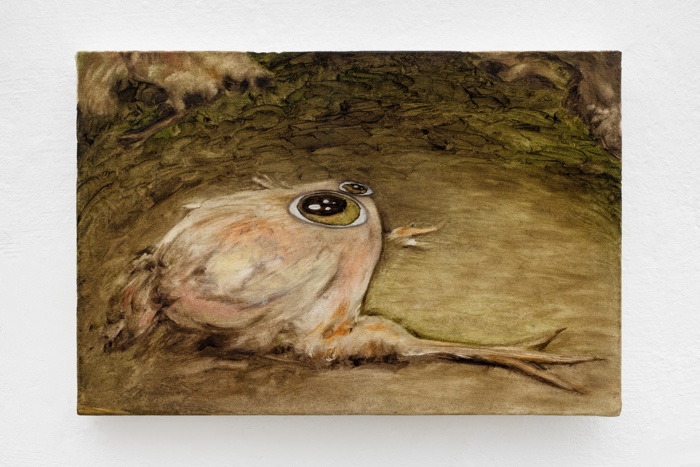
Silvia Capuzzo. Vin Vin gallery
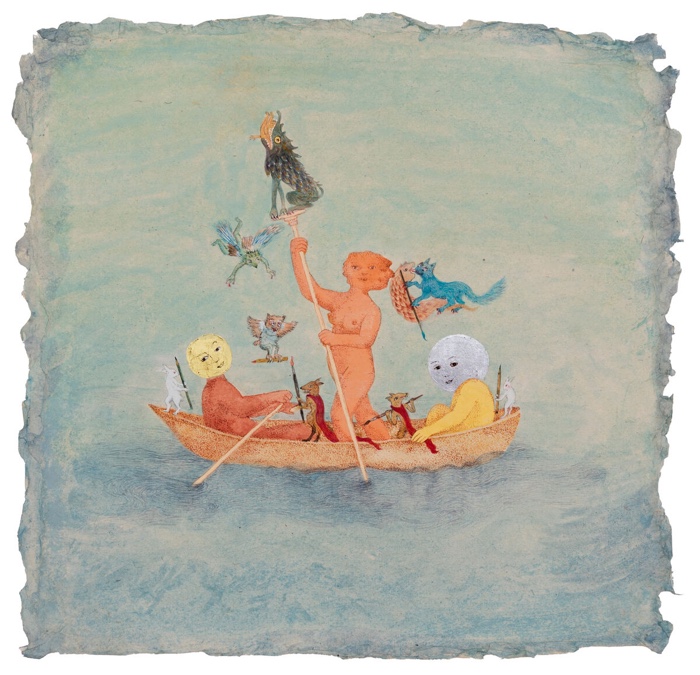
Karine Rougier, Transformer le silence en parole et en acte (Audrey Lorde), 2025. Les filles du calvaire
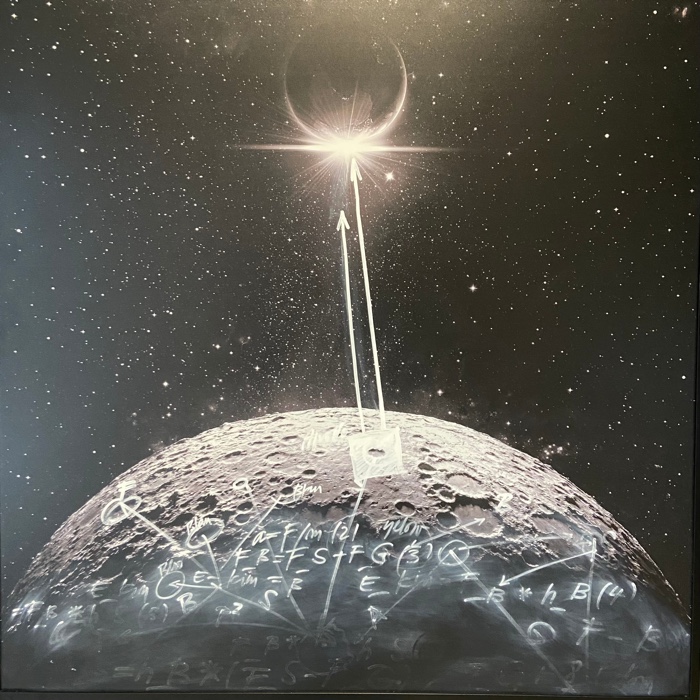
Jetelová Magdalena, DoYouHereMeMoon 07, 2018. Lohaus Sominsky gallery
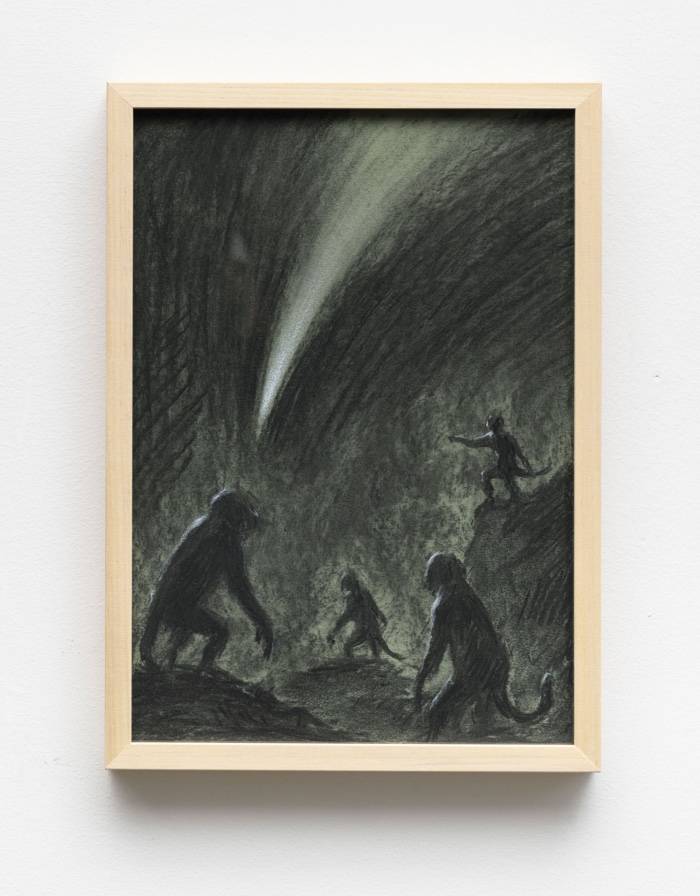
Leonardo Petrucci, Prevoluzione (Cosmo), 2025. Gilda Lavia gallery. Photo: Giorgio Benni

Leonardo Petrucci, Prevoluzione (Cometa), 2025. Gilda Lavia gallery. Photo: Giorgio Benni
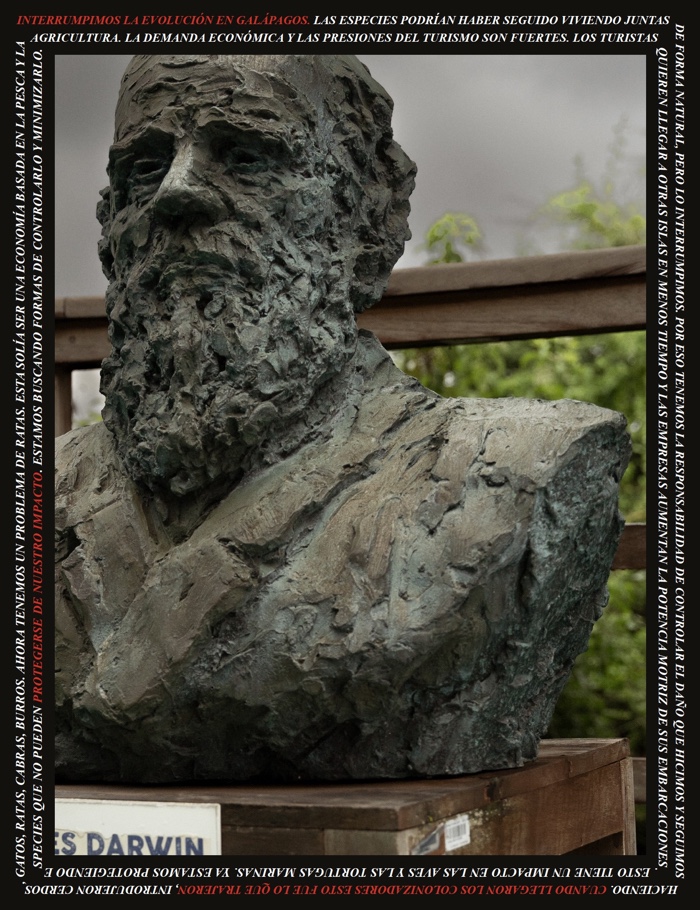
Adelita Husni-Bey, Parable #5, 2023. LAVERONICA gallery

Claudia Comte, Nearly a third of World’s Cacti face Extinction, says IUCN, 2023. Vistamare
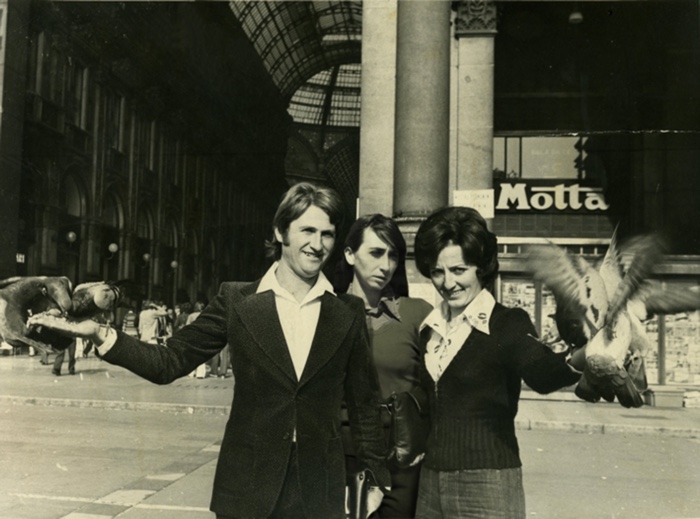
Moira Ricci, 20.12.53 – 10.08.04 (in viaggio di nozze a Milano), 2004. LAVERONICA gallery
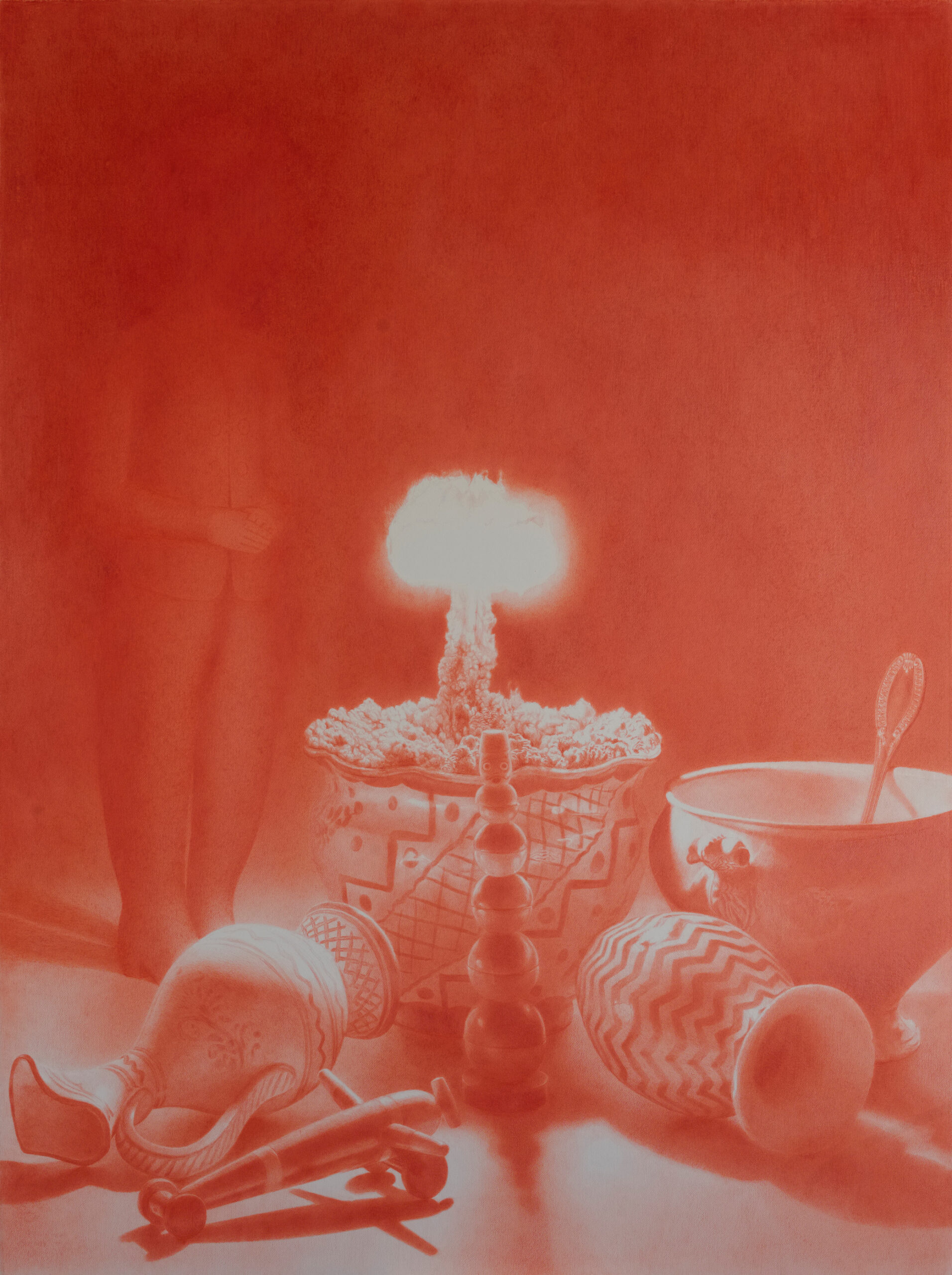
Pedro A.H. Paixão, Tiny Nuclear, 2025. Galeria 111
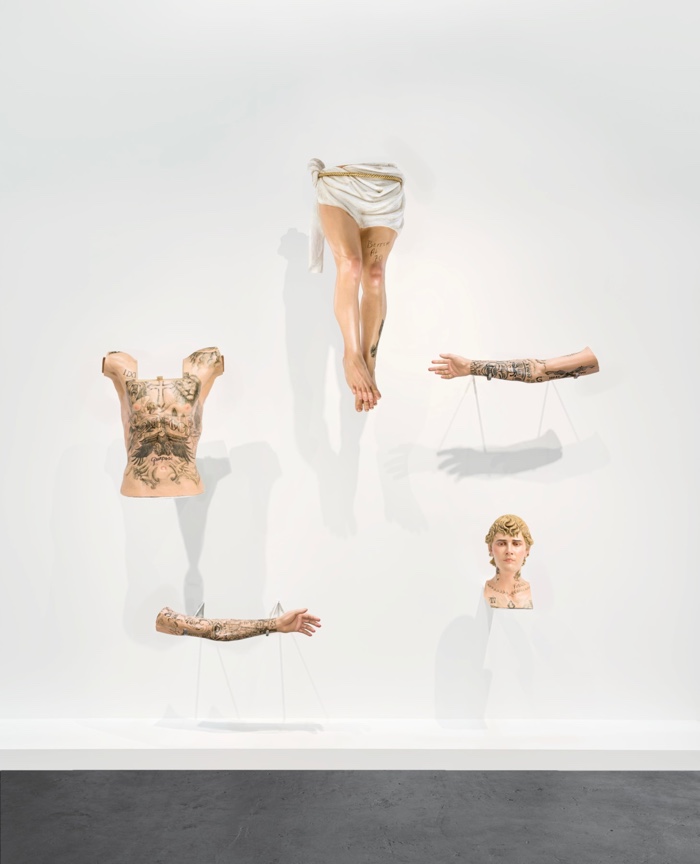
Paul Pfeiffer, Incarnator (Pampanga), 2024. Dane Gallery
Paul Pfeiffer collaborated with encarnadores (from the Latin word meaning “to make into flesh”), craftsmen celebrated for having the power to apparently breathe life into inanimate sculptures of Catholic saints. Pfeiffer’s sculptures, however, do not represent Mary nor Saint Thomas. They were modelled after Justin Bieber and transform the pop star (a self-declared born-again Christian) into a contemporary embodiment of Jesus Christ.
